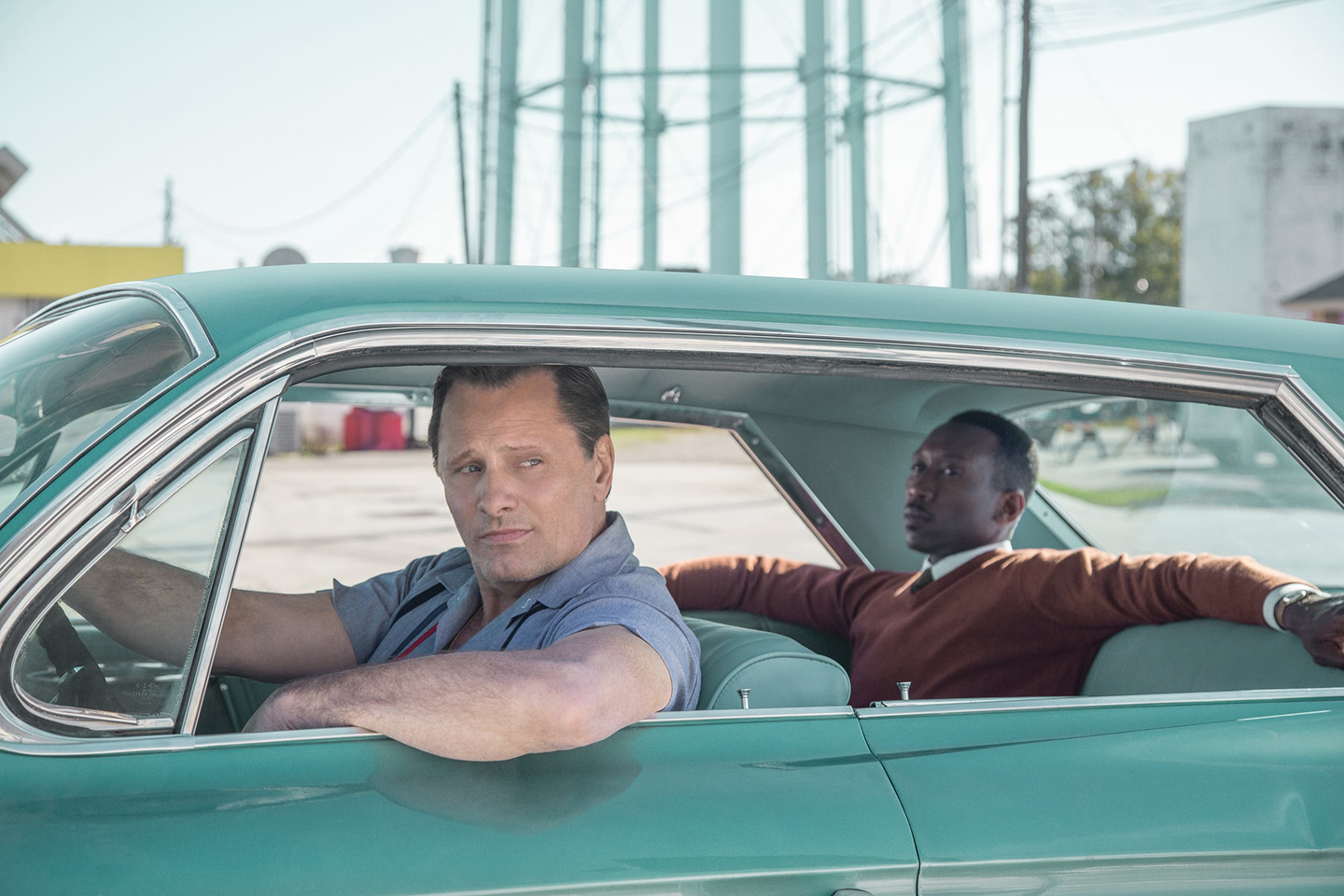
Viggo Mortensen as Tonly Vallelonga (left) and Mahershala Ali as Dr. Donald Shirley (right) in Green Book. Universal Pictures 2018. Accessed at: https://www.greenbookfilm.com/gallery
How does an African-American musician based in New York City navigate an eight-week tour which includes stops throughout the Jim Crow south in 1962? He hires a temporarily out-of-work night club bouncer and former trash truck operator as his driver. And, along the way, they consult a small booklet called The Negro Motorist Green Book.

The Negro Motorist Green-Book 1940 (facsimile), Victor Green, (2016)
Rare Books GV 1024 .N36 2016
Special Collections Research Center
George Mason University Libraries
Last weekend my family and I saw Green Book at my local theater. Always interested in films featuring materials in our holdings, I jumped at the opportunity to see it. Besides, with most of the other movies offering CGI-enhanced martial arts, explosions, gunplay, and giant video game characters wrecking the Internet, I thought it would be a nice change of pace to see a more socially-redeeming piece. Green Book fit the bill for our family night at the movies.
The film features Mahershala Ali as piano virtuoso, Dr. Donald Shirley, and Viggo Mortensen as Tony Vallelonga, the tough Italian-American doorman at New York’s Copacabana. Vallelonga has been hired by Shirley to drive and accompany him from performance to performance. Though their relationship is a bit tenuous in the beginning – Tony demonstrates some racist tendencies in his words and actions – they emerge as friends by the end of the film. Dr. Shirley encounters both subtle and overt racism in the towns and cities that are part of his concert tour. Tony witnesses this on several occasions and steps up to fight for him and protect him. For his part, Dr. Shirley helps Tony write meaningful love letters to his wife back home.
So, at this point, you are probably wondering where the actual Green Book appears in the film. It makes several subtle appearances throughout the story. In my opinion it is referenced just enough to establish it as a key part of this story and the larger story of the difficulties some faced while travelling in the Deep South during the Civil Rights struggle without overusing it to the point of exploitation. As Tony and Dr. Shirley prepare to leave New York City, a representative from Shirley’s record label hands Tony a copy of the The Negro Motorist Green Book, saying: “Here, you’ll need this.” For much of the film Tony’s copy of the Green Book is on the passenger seat beside him or on the nightstand in his motel room. Tony and Dr. Shirley nearly always stay in different accommodations because most hotels and motels denied service to African American customers. While the motels suggested in the Green Book as places where Dr. Shirley could stay were not always as inviting as those available to Tony, they were a place to stay.

Page from The Negro Motorist Green-Book 1940 (facsimile), Victor Green, (2016)
Rare Books GV 1024 .N36 2016
Special Collections Research Center
George Mason University Libraries
The Negro Motorist Green Book was a small booklet started by New York City resident Victor Hugo Green in 1936 and published until 1966. It detailed places where travelers of color could stop for gas, food, lodging, or other services without threat of harm or denial of service. The Green Book took the high road. The tone of the book was very elegant, gentle, almost matter-of-fact. There were no hints of militancy, concern, or fear for the safety of travelers, rather the publisher hoped to help African Americans avoid potential “inconveniences”. While racial discrimination was most prevalent and vicious in the Deep South, it existed nearly everywhere in the country during the publication of the Green Book. Because of this, the publication covered all of the contiguous United States and was later expanded to include Canada, Mexico and the Caribbean. The Standard Oil Company, later known as Esso, took out advertising in the Green Book. Earlier versions of the publication could be purchased at Esso service stations for about a dollar, the final editions cost about two dollars.

Introduction to The Negro Motorist Green-Book 1940 (facsimile), Victor Green, (2016)
Rare Books GV 1024 .N36 2016
Special Collections Research Center
George Mason University Libraries
SCRC recently acquired a facsimile copy of the 1940 Negro Motorist Green Book and is currently displaying it in its current exhibition: “Before and Beyond 1968: Three Civil Rights Movements in America”.
Follow Special Collections Research Center on Social Media at our Facebook, Instagram, and Twitter accounts. To search the collections held at Special Collections Research Center, go to our website and browse the finding aids by subject or title. You may also e-mail us or call if you would like to schedule an appointment, request materials, or if you have questions. Appointments are not necessary to request and view collections.


I like that movie!
Hi Dimas:
My family and I did too. Thanks for reading!!!!
Hello Dimas:
We did too. Thanks for reading!!!!!!!!
Awesome!
yes, it’s really good movie